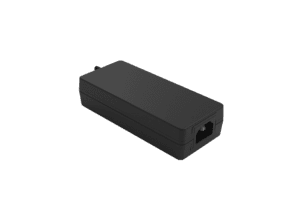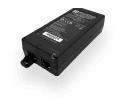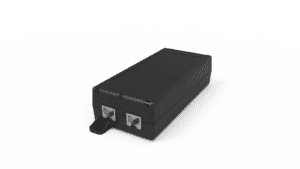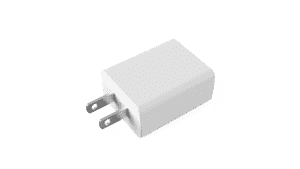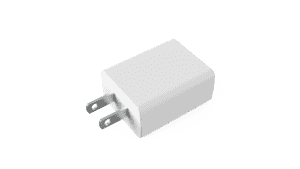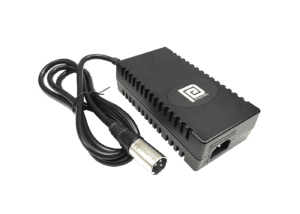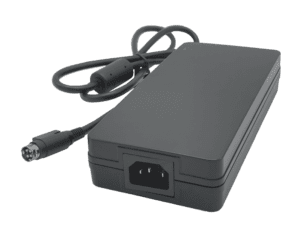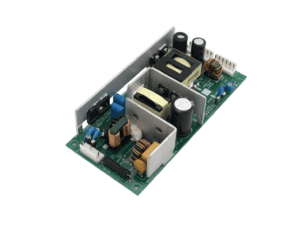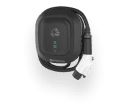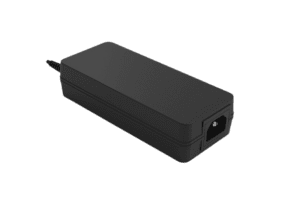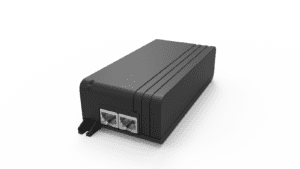BLOG
PoE Cables: Choosing the Best Network Cables
Table of contents
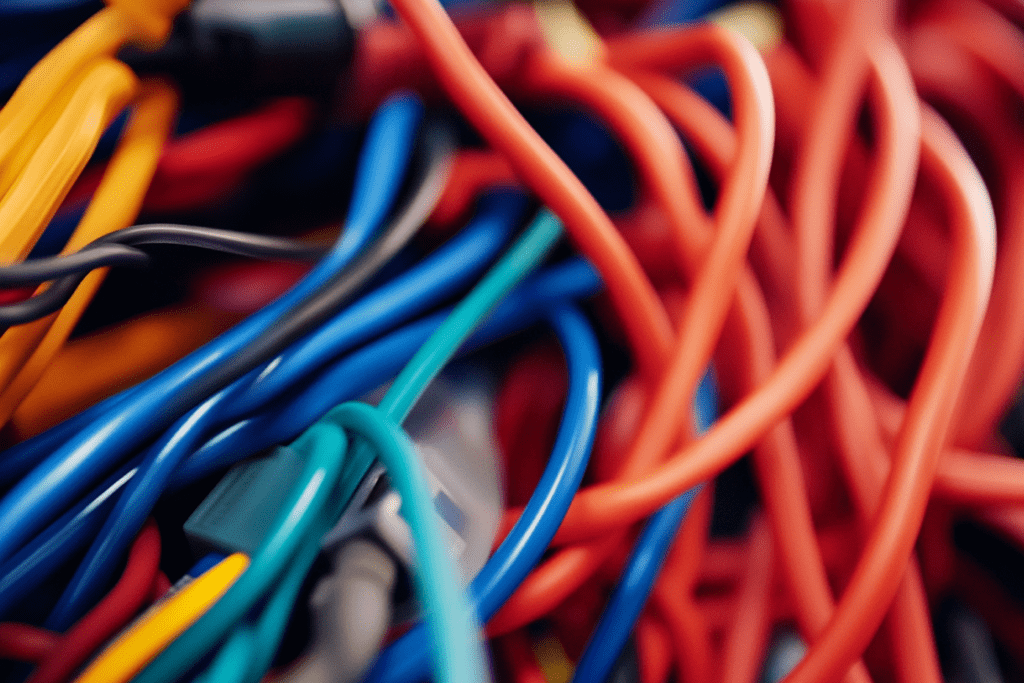
Building a robust foundation for your PoE network is crucial, but choosing the right cables is equally as vital to ensure consistent power delivery and seamless data transmission across your entire system. In this article, we’ll explore the differences between various cable types, how cable shielding and length affect performance, and how making informed choices can greatly enhance your network’s efficiency. We’ll guide you through everything you need to know about PoE cables, helping you select the best options for your needs while highlighting Phihong’s expertise in providing top-quality PoE solutions.
Understanding Ethernet Cables: Comparing Each Cable Types
When selecting PoE cables, one of the most important decisions is choosing between Cat5e, Cat6, Cat6a, Cat7, and Cat8 cables. Each category has its own strengths and is suited for different applications, depending on the required data transfer rate and the environment in which the cables will be used:
Cat5e Cables
Category 5e (Cat5e) cables are the most basic type of Ethernet cable that can support PoE. They are capable of handling data rates of up to 1 Gbps (Gigabit per second) and have a bandwidth of 100 MHz. Cat5e cables are suitable for most standard PoE applications, such as powering IP cameras and VoIP phones, in environments with minimal electromagnetic interference. They are also cost-effective, making them a popular choice for small to medium-sized networks.
- Data Transfer Rate: Up to 1 Gbps (Gigabit Ethernet)
- Bandwidth: 100 MHz
- Maximum Cable Length: 100 meters (328 feet)
- Shielding: Typically unshielded (UTP), but shielded versions (STP) are available.
- Best For: Basic PoE applications with moderate data and power requirements. Suitable for most standard PoE setups where high data transfer rates are not critical.
Cat6 Cables
Category 6 (Cat6) cables offer improved performance over Cat5e, with data rates of up to 10 Gbps and a bandwidth of 250 MHz. These cables are better suited for networks that require higher data transfer rates and are more resilient to interference, making them ideal for environments with a moderate level of EMI. Cat6 cables are also capable of supporting PoE+ (IEEE 802.3at) applications, which require higher power delivery than standard PoE.
- Data Transfer Rate: Up to 10 Gbps (10-Gigabit Ethernet) over short distances (up to 55 meters)
- Bandwidth: 250 MHz
- Maximum Cable Length: 100 meters (328 feet) for 1 Gbps; up to 55 meters (180 feet) for 10 Gbps
- Shielding: Available in both unshielded (UTP) and shielded (STP) versions.
- Best For: Higher-performance PoE applications where faster data transfer rates are needed. Suitable for environments with moderate to high data throughput requirements.
Cat6a Cables
Category 6a (Cat6a) cables provide an enhancement over Cat6 cables, offering data rates of up to 10 Gbps with a bandwidth of 500 MHz. The additional shielding in Cat6a cables reduces crosstalk and interference even further, making them suitable for environments with high levels of EMI. Cat6a cables are also well-suited for PoE+ and PoE++ (IEEE 802.3bt) applications, providing reliable power delivery and data transfer over longer distances compared to Cat6.
- Data Transfer Rate: Up to 10 Gbps (10-Gigabit Ethernet) over full distance (up to 100 meters)
- Bandwidth: 500 MHz
- Maximum Cable Length: 100 meters (328 feet)
- Shielding: Typically shielded (F/UTP or U/FTP) to reduce interference.
- Best For: High-performance PoE applications requiring consistent 10 Gbps data rates over longer distances. Ideal for data centers and high-density environments.
Cat7 Cables
Category 7 (Cat7) cables are among the highest-performing Ethernet cables available for PoE networks. They can handle data rates of up to 10 Gbps and offer a bandwidth of 600 MHz. Cat7 cables are fully shielded, providing excellent protection against EMI, and are ideal for high-density networks or environments with significant interference. They are also capable of supporting PoE++ (IEEE 802.3bt) applications, which deliver even higher power levels than PoE+.
- Data Transfer Rate: Up to 10 Gbps (10-Gigabit Ethernet) over full distance (up to 100 meters)
- Bandwidth: 600 MHz
- Maximum Cable Length: 100 meters (328 feet)
- Shielding: Shielded twisted pairs (S/FTP) for superior protection against interference.
- Best For: Advanced PoE setups where high shielding is necessary to prevent crosstalk and interference. Suitable for environments with significant electromagnetic interference or where future-proofing for higher bandwidths is desired.
Cat8 Cables
Category 8 (Cat8) cables represent the latest advancement in Ethernet technology, supporting data rates of up to 25-40 Gbps and a bandwidth of 2000 MHz. They are designed for high-performance data centers and other high-speed applications where maximum data transfer rates are required. Cat8 cables are fully shielded and provide superior protection against interference, making them ideal for environments with high levels of EMI. Although Cat8 cables are typically used in data centers and high-speed network applications, they are also capable of supporting PoE++ (IEEE 802.3bt) applications, ensuring robust power delivery and data transfer even in demanding conditions.
- Data Transfer Rate: Up to 25-40 Gbps (depending on the subcategory)
- Bandwidth: 2000 MHz
- Maximum Cable Length: 30 meters (98 feet)
- Shielding: Shielded twisted pairs (S/FTP)
- Best For: Cutting-edge PoE applications requiring very high data rates over short distances. Primarily used in data centers and server rooms for backbone connections.
Key Factors to Consider Before Selecting Ethernet Cables
Selecting PoE cables involves evaluating several key factors to ensure optimal performance and reliability. Consider your network’s specific requirements, the installation environment, and the devices to be powered. Here’s what to keep in mind when choosing Ethernet cables for your PoE network:
- Data Transfer Rate Needs: Select the cable category based on your network’s speed requirements. For standard PoE devices, Cat5e or Cat6 may suffice. For higher data rates or future-proofing, consider Cat6a or Cat7.
- Bandwidth Considerations: Higher categories offer greater bandwidth, crucial for high-performance applications or networks with significant data traffic.
- Installation Environment: Consider shielding needs based on environmental factors like electromagnetic interference (EMI) or physical stress. Shielded cables (Cat6a, Cat7) provide better protection in challenging environments.
- Distance and Length: Ensure the chosen cable supports the required distance without signal degradation. For longer runs or higher data rates, higher-category cables are preferable.
- Budget: Higher-category cables come at a higher cost. Balance performance needs with budget constraints to select the best option for your PoE network.
Understanding these categories and their capabilities will help you make informed decisions when selecting Ethernet cables for your PoE network, ensuring optimal performance and reliability.
Shielded vs. Unshielded Cables: Which is Best for Your PoE Network?
Another critical consideration when choosing PoE cables is whether to use shielded or unshielded cables. The choice between shielded twisted pair (STP) and unshielded twisted pair (UTP) cables depends largely on the environment in which the cables will be installed and the level of electromagnetic interference (EMI) present.
Unshielded Twisted Pair (UTP) Cables: UTP cables are the most common type of Ethernet cables used in PoE networks. They lack additional shielding, making them more flexible and easier to install. UTP cables are suitable for environments with minimal EMI, such as residential or small office settings. They are also less expensive than shielded cables, making them a cost-effective option for standard applications.
Shielded Twisted Pair (STP) Cables: STP cables feature an additional layer of shielding, typically in the form of a foil or braided metal layer, that protects the cable from EMI. This shielding is especially important in environments with high levels of interference, such as industrial settings, data centers, or areas with a high concentration of electronic devices. STP cables provide more reliable data transmission in these environments, ensuring that power and data signals are not compromised by external interference.
When deciding between STP and UTP cables, consider the specific environment where the cables will be installed. If your network is located in an area with minimal interference, UTP cables may be sufficient. However, if you’re installing cables in a high-interference environment, STP cables offer the additional protection needed to maintain reliable network performance.
Data Rates and Power Delivery: How Cable Type Affects PoE Performance
The type of cable you choose for your PoE network can have a significant impact on both data rates and power delivery. Different cable categories offer varying levels of performance in terms of data transfer rates and the maximum power they can deliver to connected devices.
Data Rates: As mentioned earlier, higher-category cables like Cat6 and Cat7 offer greater data transfer rates compared to Cat5e. This is particularly important in networks where high-bandwidth applications are used, such as video streaming, large file transfers, or real-time data processing. Ensuring that your cables can handle the required data rates is crucial for maintaining network performance and preventing bottlenecks.
Power Delivery: In addition to data rates, the type of cable also affects the amount of power that can be delivered to connected devices. Higher-category cables typically have thicker conductors and better insulation, which allows them to carry more power without experiencing significant voltage drop or power loss. This is especially important for PoE+ and PoE++ applications, where higher power levels are required to operate devices like PTZ cameras, LED lighting, or digital signage.
When selecting cables for your PoE network, it’s essential to consider both the data rates and power delivery requirements of your devices. Choosing the right cable type ensures that your network can handle the demands of high-bandwidth applications while also delivering sufficient power to all connected devices.
Cable Length Considerations: Maximizing PoE Efficiency
The length of the Ethernet cable used in your PoE network can also impact performance, particularly in terms of power delivery and data transmission. PoE standards, such as IEEE 802.3af and IEEE 802.3at, specify a maximum cable length of 100 meters (approximately 328 feet) for Ethernet cables. However, as the cable length increases, the amount of power delivered to the connected device decreases due to voltage drop, and the data signal may weaken, potentially leading to reduced performance.
Power Loss: Longer cable runs result in greater power loss, which can be problematic for devices that require a stable power supply. For example, if you’re powering a high-consumption device like a PTZ camera or an LED light, the voltage drop over a long cable could cause the device to malfunction or operate below its optimal performance level.
Signal Degradation: Similarly, the longer the cable, the more likely it is that the data signal will degrade, especially if the cable is not properly shielded or if it’s installed in an environment with high interference. This degradation can result in slower data transfer rates or increased latency, which can negatively impact network performance.
To maximize PoE efficiency, it’s important to keep cable lengths within the recommended range and to choose higher-quality cables that minimize power loss and signal degradation. If longer cable runs are necessary, consider using powered extenders or repeaters to boost the signal and maintain adequate power delivery.
Best Practices for Installing and Maintaining PoE Cables
Proper installation and maintenance of PoE cables are crucial for ensuring the long-term performance and reliability of your network. By following best practices, you can prevent common issues such as signal degradation, power loss, and premature cable failure.
Install Cables with Care
During installation, it’s important to handle PoE cables with care to avoid damaging the internal conductors. Avoid bending the cables too tightly, as this can damage the wires inside and lead to signal loss or power delivery issues. Use appropriate cable management techniques, such as cable trays or conduits, to keep the cables organized and protected from physical damage.
Ensure Proper Grounding
If you’re using shielded cables, it’s essential to ensure that they are properly grounded. Proper grounding helps to dissipate any electromagnetic interference and prevents it from affecting the data signals within the cables. Make sure that all connections are secure and that the grounding is continuous throughout the network.
Regularly Inspect and Test Cables
Routine inspections and testing of PoE cables are important for identifying potential issues before they cause network disruptions. Check for any signs of wear or damage, such as frayed insulation or loose connections, and replace any damaged cables as needed. Regularly testing the cables for signal strength and power delivery can also help ensure that your network is performing optimally.
Plan for Upgrades and Expansions
As your network grows, you may need to add more devices or increase the data rates and power delivery capabilities of your PoE system. When planning for upgrades or expansions, consider the impact on your existing cables and whether they can support the increased demands. If necessary, upgrade to higher-category cables to ensure continued reliable performance.
CLIENT'S QUOTE
Phihong's Power-Over-Ethernet solutions have transformed our network, boosting efficiency and reducing costs. Their seamless integration has simplified both installation and maintenance.
Explore More with Phihong USA
As we conclude our exploration of Ethernet, it’s clear that this field is experiencing unprecedented growth. For over 50 years, Phihong has been at the forefront of innovation, serving Fortune 500 companies across various industries as a leading power supply manufacturer for OEMs.
Phihong’s leadership, particularly in advanced technologies like Power over Ethernet, extends to active contributions in the development of IEEE PoE standards. This involvement underscores our commitment to innovation and dedication to providing cutting-edge power solutions that will shape the future of technology.
In addition to custom power supply solutions, Phihong offers a diverse range of products, including:
- Power over Ethernet (PoE) Solutions: PoE injectors, splitters, media converters, and more
- AC/DC Adapters and Power Supplies: USB adapters, desktop adapters, industrial-grade power supplies, and more
- Battery Chargers: Chargers for lithium-ion and lead-acid batteries
- Medical Power Supplies: Specialized power supplies that meet stringent healthcare requirements
By partnering with Phihong USA, you are choosing a trailblazer in power technology. If you’re an OEM looking for a custom PoE solution or just looking for a quality product, call us today: 510-445-0100 or email us at usasales@phihongusa.com. We look forward to collaborating with you.

Contact Our Team Today!
Our dedicated sales team and international partners are prepared to support you with your latest projects and initiatives globally.
What is the difference between Cat5e, Cat6, and Cat7 cables in PoE networks?
Cat5e, Cat6, and Cat7 cables differ primarily in their data transfer rates, bandwidth, and shielding, which impacts their performance in PoE networks. Cat5e (Category 5e) cables are the most basic option, supporting data rates of up to 1 Gbps and a bandwidth of 100 MHz. They are suitable for standard PoE applications, such as powering IP cameras and VoIP phones, in environments with minimal electromagnetic interference (EMI). Cat6 (Category 6) cables offer improved performance, with data rates of up to 10 Gbps and a bandwidth of 250 MHz. These cables are better suited for networks that require higher data transfer rates and are more resilient to interference, making them ideal for environments with moderate levels of EMI. Cat7 (Category 7) cables provide the highest performance, supporting data rates of up to 10 Gbps and offering a bandwidth of 600 MHz. Fully shielded, Cat7 cables are designed for high-density networks or environments with significant interference, making them the best choice for demanding PoE applications like PoE++ (IEEE 802.3bt).
How does shielding affect the performance of PoE cables?
Shielding in PoE cables plays a crucial role in protecting the data and power signals from electromagnetic interference (EMI). Shielded Twisted Pair (STP) cables have an additional layer of protection, typically in the form of a foil or braided metal layer, that surrounds the twisted pairs of wires. This shielding helps to prevent external electromagnetic noise from disrupting the signals carried by the cables, ensuring more reliable data transmission and consistent power delivery. Unshielded Twisted Pair (UTP) cables, on the other hand, lack this additional shielding, making them more susceptible to interference. UTP cables are generally sufficient for environments with minimal EMI, such as residential or small office settings, but may experience performance issues in environments with high levels of interference, such as industrial sites or data centers. Choosing the right type of cable—shielded or unshielded—depends on the specific environmental conditions of your installation site.
Why is cable length important in PoE networks?
Cable length is a critical factor in PoE networks because it directly affects both power delivery and data transmission. According to PoE standards like IEEE 802.3af and IEEE 802.3at, Ethernet cables should not exceed a length of 100 meters (approximately 328 feet). As the length of the cable increases, the amount of power delivered to the connected device decreases due to voltage drop, and the data signal may weaken, potentially leading to reduced performance. Power Loss: Longer cables result in greater power loss, which can be problematic for devices that require a stable power supply, such as PTZ cameras or LED lights. If the voltage drop is too significant, the connected device may not receive enough power to function properly. Signal Degradation: Similarly, the longer the cable, the more likely it is that the data signal will degrade, especially if the cable is not properly shielded or if it’s installed in a high-interference environment. This degradation can result in slower data transfer rates or increased latency, negatively impacting network performance. To maximize PoE efficiency, it’s important to keep cable lengths within the recommended range and to use high-quality cables that minimize power loss and signal degradation.
What are the benefits of using Cat6 or Cat7 cables in a PoE network?
Using Cat6 or Cat7 cables in a PoE network offers several advantages, particularly in terms of data transfer rates, power delivery, and resistance to electromagnetic interference (EMI). Cat6 Cables: Cat6 cables support data rates of up to 10 Gbps and have a bandwidth of 250 MHz, making them suitable for networks that require higher data transfer rates, such as those used for video streaming, large file transfers, or real-time data processing. They also provide better resistance to EMI compared to Cat5e cables, ensuring more reliable performance in environments with moderate levels of interference. Cat7 Cables: Cat7 cables offer even greater performance, with data rates of up to 10 Gbps and a bandwidth of 600 MHz. These cables are fully shielded, providing excellent protection against EMI, and are ideal for high-density networks or environments with significant interference. Cat7 cables are also capable of supporting PoE++ (IEEE 802.3bt) applications, which require higher power levels. The improved performance and shielding offered by Cat6 and Cat7 cables make them a better choice for demanding PoE applications and future-proofing your network.
How does Phihong support the selection and implementation of PoE cables?
Phihong, a leader in PoE technology, provides a comprehensive range of high-quality PoE cables designed to meet the diverse needs of modern networks. Phihong’s expertise in PoE technology ensures that their cables deliver consistent power and data transmission, even in challenging environments. Phihong offers various cable types, including Cat5e, Cat6, and Cat7, in both shielded and unshielded options, allowing customers to choose the best cables for their specific applications. In addition to offering high-quality products, Phihong provides expert guidance and support to help customers select the right cables for their network. Phihong’s team of professionals can assist with assessing network requirements, choosing the appropriate cable type, and ensuring proper installation and maintenance to maximize the performance and longevity of the PoE network. By working with Phihong, customers can confidently build and maintain reliable PoE networks that meet their current and future needs.

